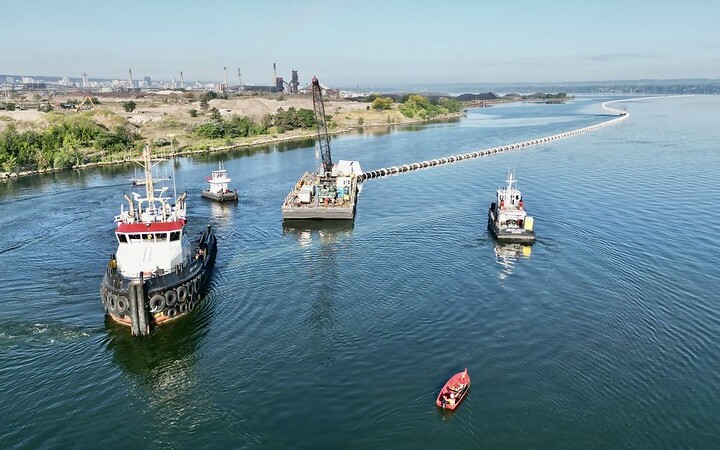Overall shipping activity for the U.S. Great Lakes in 2023 continues in lockstep with the previous year, with approximately 19.9 million tonnes of total cargo traffic year to date. In 2022, the total traffic at the end of August was 19.8 million tonnes.
While there has been year to year variation in the traffic of specific commodities, key construction commodities showed year-over-year gains in August. Almost 1.2 million tonnes of cement and clinkers having traveled the system this year (a year-over-year increase of 205,000 tonnes, or 20.65%). Stone also saw increased annual traffic, with 158,000 tonnes transiting the system (a year-over-year increase of 73,000 tonnes, or 86.43%.)
“New construction, modernization and infrastructure activity remained strong throughout the first part of the year in U.S. and Canadian Great Lakes Markets,” Kelly Curtis, senior vice president, cement sales and logistics for VCNA/St Mary’s Cement, said in a statement. “The flexibility of our maritime operations played an essential role in our ability to respond and adapt to changing dynamics in our operating environment.”
The movement of key commodities along the U.S. Great Lakes is not only vital to supply chain strength, but also economic strength — a point made clear in a document recently released by a member port of the Chamber of Marine Commerce (CMC).
In August, the Toledo-Lucas County (Ohio) Port Authority released the results of an economic impact study that said in 2022, the Port of Toledo supported 7,971 jobs and generated $906.2 million in economic activity. Maritime shipping in Toledo produced $183.2 million in federal, state and local tax revenue and supplied $708.6 million in personal income and local consumption expenditures.
“The Toledo-Lucas County Port Authority had an excellent year in 2022,” said Thomas J. Winston, president and CEO of the Toledo-Lucas County Port Authority. “The results from this year’s study indicate an increase of 888 new jobs and more than $237 million in additional economic activity compared to data reported in the 2018 study. This increase can be mostly contributed to the addition of the Cleveland-Cliffs Toledo direct reduction plant at Ironville in East Toledo.”
Brisk maritime shipping activity during August brought port tonnage within 7% of the 2022 year-to-date total. With over 6.5 million short tons handled year to date, the Port of Toledo is well ahead of the 2020 and 2021 shipping seasons.
In addition to announcing economic contributions, CMC member ports are also showing their commitment to the environment. On Sept. 7, The Port of Cleveland refreshed its strategic vision, most notably to include a commitment to a Climate Action Plan, with the goal of achieving net-zero greenhouse gas emissions by 2050. This goal is in alignment with the Biden administration’s greenhouse gas reduction targets, and the goals of the city of Cleveland, Cuyahoga County, and the Northeast Ohio Areawide Coordinating Agency. The port’s goal was undertaken with the intention of becoming one of the most environmentally responsible ports in the nation.
“While we acknowledge that reaching this ambitious goal demands close collaboration with our industry, community and government partners, the port has a proven track record of rising to challenges,” noted William D. Friedman, president and CEO of the Cleveland-Cuyahoga County Port Authority. “We wholeheartedly embrace this opportunity to lead the way toward a cleaner, greener future for our region, demonstrating our unwavering commitment to environmental sustainability and the well-being of our community.”
“Ports along the Great Lakes have become true leaders and standard-bearers when it comes to driving the economy while protecting and preserving the environment,” said Bruce Burrows, president and CEO of the Chamber of Marine Commerce.




